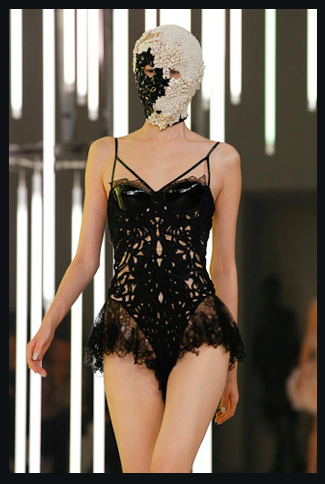Upon the arrival of the Nazis in Paris in 1940, Jewish hat designer Fanny Berger was forced to sell her business to an “aryan." She evaded arrest until September 1942. She spent 9 months at an internment camp at Beaune-la-Rolande before traveling to Drancy and finally to Auschwitz. She was killed upon arrival in July 1943. She was 42 years old. Even more tragic is the fact that Berger was estranged from her family prior to her death because they did not approve of her independent lifestyle and career choices.
Very little information on Berger is available other than a 2008 documentary made by her niece, entitled "Murder of a Hatmaker." Indeed, only a few photographs remain as visual proof that this woman ever existed.
As Lisa Katzman writes:
"Some of these details are related in a chillingly detached account by two French archivists, who, as the official custodians of the Vichy regime's census data and Nazi records, bear the burden of history with a disdain that seems equally directed at the Jews as the Nazi occupiers. It is an attitude that provides the subtext for much of what unfolds in the film, including the bizarrely self-reproaching admission of an elderly aristocratic acquaintance of Odette's, who claims he has no recollection of serving as a witness to the mandatory sale of her business to a gentile 'Aryanized' hatmaker, because, as he says, 'to send a person to her death, I think I would remember.' "
What's more than tragic, or depressing, is the infuriating fact that so little remains of this particular member of the Parisian fashion industry. Coco Chanel slept with a Nazi and a bottle of her perfume is sold every thirty seconds. Fanny Berger committed the crime of being born Jewish, and we've all but forgotten her. Sometimes depressing is necessary.
What's more than tragic, or depressing, is the infuriating fact that so little remains of this particular member of the Parisian fashion industry. Coco Chanel slept with a Nazi and a bottle of her perfume is sold every thirty seconds. Fanny Berger committed the crime of being born Jewish, and we've all but forgotten her. Sometimes depressing is necessary.
Posted by: Carla































